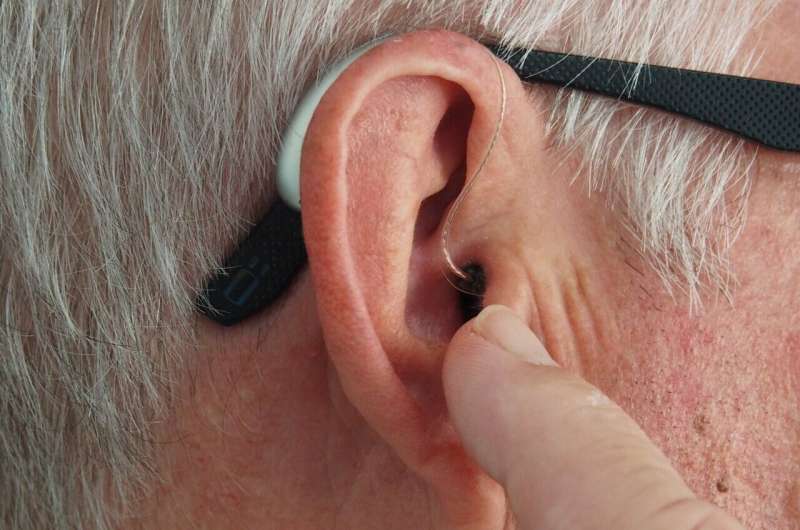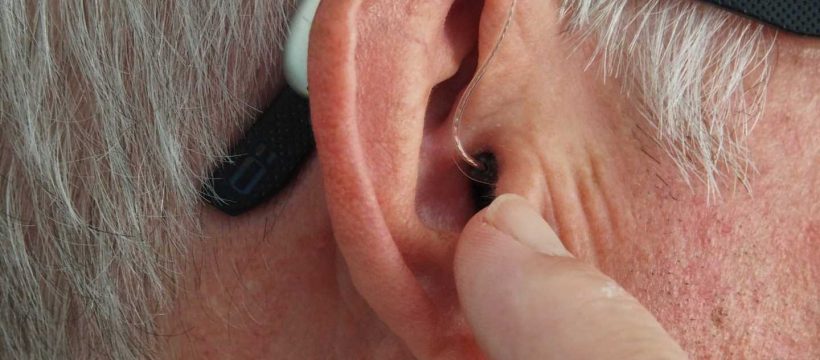
Researchers from Mass Eye and Ear have developed a word-score model capable of estimating the amount of hidden hearing loss in human ears.
In a new study published June 23 in Scientific Reports, a team of researchers at Mass Eye and Ear’s Eaton-Peabody Laboratories determined average speech scores as a function of age from the records of nearly 96,000 ears examined at Mass Eye and Ear. They then compared the data to a previous study at Mass Eye and Ear that had tracked the average loss of cochlear nerve fibers as a function of age. By combining both sets of data, researchers constructed an estimate of the relation between speech scores and nerve survival in people.
According to lead study author Stéphane F. Maison, Ph.D., CCC-A, principal investigator of the Eaton-Peabody Laboratories and associate professor of Otolaryngology–Head and Neck Surgery at Harvard Medical School, the new model leads to better evaluations of the cochlear nerve damage in patients and the associated speech-intelligibility deficits that come with the neural loss. The model also offers ways to estimate the effectiveness of hearing loss interventions, including the use of personal sound amplification products and hearing aids.
“Prior to this study, we could either estimate neural loss in a living patient using a lengthy test battery or measure cochlear nerve damage by removing their temporal bones when they’ve died,” said Dr. Maison. “Using ordinary speech scores from hearing tests—the same ones collected in clinics all over the world—we can now estimate the number of neural fibers that are missing in a person’s ear.”
Uncovering hidden hearing loss
Two main factors determine how well a person can hear: audibility and intelligibility. Hair cells, the sensory cells inside the inner ear, contribute to the audibility of sounds—or how loud a sound must be to be detectable. Upon receiving a sound, hair cells pass electrical signals to the cochlear nerve, which then passes those signals to the brain. How well the cochlear nerve relays these signals contributes to the clarity, or intelligibility, of sound processed within the central nervous system.
For years, scientists and clinicians believed hair cell deterioration was the primary cause of hearing loss and that cochlear nerve damage was widespread only after the hair cells were destroyed. Audiograms, long considered the gold standard of hearing exams, provide information about the health of hair cells. Because it was believed nerve loss was secondary to hair cell loss or dysfunction, patients with a normal audiogram were given a clean bill of health despite reporting difficulties hearing in noisy environments. Experts now understand why the audiogram is not informative about the health of the auditory nerve.
“This explains why some patients who report difficulties understanding a conversation in a busy bar or restaurant may have a ‘normal’ hearing exam. Likewise, it explains why many hearing aid users who receive amplified sounds still struggle with intelligibility of speech,” Dr. Maison said.
In 2009, M. Charles Liberman, Ph.D., and Sharon Kujawa, Ph.D., principal investigators in the Eaton-Peabody Laboratories, upended the way scientists thought about hearing when they uncovered hidden hearing loss. Their findings revealed that cochlear nerve damage preceded hair cell loss as a result of aging or noise exposure and suggested that, by not providing information about the cochlear nerve, audiograms had not actually assessed the full extent of damage to the ear.
Building a model to predict cochlear nerve damage
In the study, Dr. Maison and his team used a speech-intelligibility curve to predict what an individual’s speech score should be based on their audiogram. They then measured the differences between the predicted word recognition scores and the one obtained during the patient’s hearing evaluation.
Since the list of words was presented at a level well above the patient’s hearing threshold—where audibility is not an issue—any difference between the predicted and the measured score would have reflected deficits in intelligibility, Dr. Maison explained.
After considering a number of factors, including the cognitive deficits that may accompany aging, the researchers argued that the size of these discrepancies reflected the amount of cochlear nerve damage, or hidden hearing loss, a person had. They then applied measures of neural loss from existing histopathological data from human temporal bones to come up with a predictive model based on a standard hearing exam.
The findings confirmed an association between poorer speech scores and larger amounts of cochlear nerve damage. For example, the worst scores were found in patients with Ménière’s disease, consistent with temporal bone studies showing a dramatic loss of cochlear nerve fibers. Meanwhile, patients with conductive hearing loss, drug-induced and normal age-related hearing loss—etiologies with the least amount of cochlear nerve damage—only exhibited moderate-to-small discrepancies.
Changing the landscape of hidden hearing loss research and beyond
More than 1.5 billion people live with some degree of hearing loss, according to the World Health Organization. Some of those individuals may not qualify as candidates for traditional hearing aids, particularly if they present with a mild to moderate high-frequency hearing loss. Knowing the extent of the neural damage should inform clinicians about the best ways to address a patient’s communication needs and offer appropriate interventions beside the use of effective communication strategies.
This new research was part of a five-year, $12.5 million P50 grant from the National Institutes of Health to better understand the prevalence of hidden hearing loss.
Source: Read Full Article
